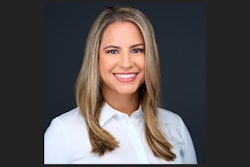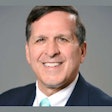As the seasons come and go and new routines kick in, many dental practices notice a common pattern: fewer patients, more appointment changes, and families putting off care until their routines normalize. As a result, cash flow takes a hit -- if you let it.
Rather than seeing it as a setback, view it as a prime opportunity to revamp your revenue cycle management (RCM) and set the practice up for a strong financial finish to the year.
Making the most of downtime
 Estela Vargas, CRDH.
Estela Vargas, CRDH.
While auto-reminders and phone calls keep getting dodged by patients, shift from panic and desperation to fill the schedule, and focus on RCM with intensity.
Dig into the 30-, 60-, and 90-day insurance aging reports. Pinpoint the claims with the highest value that are over 30 days old. It's critical to assign who's responsible for each of these claims. The goal is to get a status update on them the same day and meticulously log every interaction in a shared tracker that the whole team can access. This is the prime time to cross-train staff and learn from each other’s skills.
If a claim only needs a quick fix -- like a missing attachment -- handle it immediately. Fixing these issues now prevents claims from dragging on to 60 or 90 days, where they become a real headache to chase down.
While sifting through rejection dashboards on the clearinghouse and payer portals, determine the following: What is causing claims to stall across the board? The patterns will stand out. It could be incorrect payer IDs, missing tooth clauses, frequency limits, plan downgrades, or waiting periods. Once the patterns are identified, mandatory checks should be established in the insurance verification scripts. This foresight will significantly cut down on preventable denials.
Next, update and upgrade your insurance verification process. Spend some downtime refining your verification script and forms. The goal is to capture all the essential details affecting claim outcomes. This process includes, but isn't limited to, understanding the difference between the plan year and calendar year, noting treatment history and how it affects the existing treatment plan, knowing alternate benefit policies and building them in the coverage books/tables, tracking perio and crown frequencies, identifying surgical exclusions, and recognizing when preauthorization is needed or required.
After you're finished revamping, rally the team and test the new script on a small group of upcoming patients. This step will reveal any gaps or areas for improvement before the schedule fills up again. This ongoing adjustment ensures the verification process is robust and truly effective. Rinse and repeat whenever there are lulls in the schedule.
Ready for a solution?
If you want a practical jump-start, here’s a one-page “RCM Sprint” worksheet (aging triage template, verification script prompts, and appeal checklist and template). Email [email protected] with “RCM Sprint” in the subject line, and you’ll receive a reply containing the document. If you’re short on capacity, borrow the parts you need or loop in a trusted partner, Remote Sourcing, to cover the backlog while you keep the clinical side moving.
Collect more through better documentation and review
Good documentation is another powerful tool that consistently delivers results. Standardize clinical notes so they clearly and simply answer these four key questions:
- Why is the patient here?
- What was observed?
- Why is the treatment necessary?
- What is the dentist’s expected outcome?
The clinical note should be backed up with clear objective radiographs, intraoral images, perio charting, and any documented risk factors supporting the treatment’s necessity. When these elements are all consistently present and well organized at the time of submission, the claims’ first-pass approval rate will jump, making appeals the exception rather than the norm. That is the ultimate goal!
Calmer schedules will allow time to review the payer mix, focusing on the payers who actually pay claims efficiently and fairly. Grab a recent batch of explanation of benefits (EOBs) and sort denials and reductions by code and reason. The patterns will stand out. Suppose a particular plan consistently downgrades or bundles procedures. In such cases, you reach a fork in the road as you consider:
- Should estimates be adjusted?
- Do you attempt to renegotiate with the payer?
- Do you change how treatment options are presented to patients?
The goal is to fully collect the contracted fee between the patient and the insurance company. Also, if the fee schedules haven't been updated recently, now's the time to get current market data and revise them.
Even minor corrections can stop the slow drain of seemingly small write-offs. For example, imagine how many thousands of dollars would be lost if a $35 periapical image were written off countless times when it could have been collected from the patient.
Appeal, appeal, appeal!
Finally, stop putting appeals on the back burner! They’re daunting, taxing, and downright annoying. Ignoring them is giving up on that money.
Treat appeals as a consistent part of the workflow, not as last-minute emergencies where the doctor needs to be chased down to review a chart and scribble a quick narrative. If a claim is denied due to a simple clerical error, fix it the same day.
For dental necessity denials, promptly file a concise, evidence-based appeal with all original and new attachments, directly citing the specific plan policy. If the payer sends a generic form letter, escalate the appeal with a targeted rebuttal and, if needed, ask for the credentials of the claim reviewer. Consistency drives measurable results.
The seasonal dip in patient volume does not have to cause heartburn, uncertainty, or slow the practice's financial momentum. It’s an opportunity to tackle aged claims, strengthen verification processes, sharpen clinical documentation, and get the team on board with a steady weekly RCM rhythm. By doing these steps, collections will already be on a strong upward trajectory, ensuring financial stability by the time patient volume picks up again.
Estela Vargas, CRDH, is the founder and CEO of Remote Sourcing, a dental insurance billing and revenue recovery service. She is a graduate of Miami Dade College's dental hygiene program. Vargas' extensive background in the clinical arena of dentistry is coupled with her experience as a practice administrator and business executive.
The comments and observations expressed herein do not necessarily reflect the opinions of DrBicuspid.com, nor should they be construed as an endorsement or admonishment of any particular idea, vendor, or organization.



















